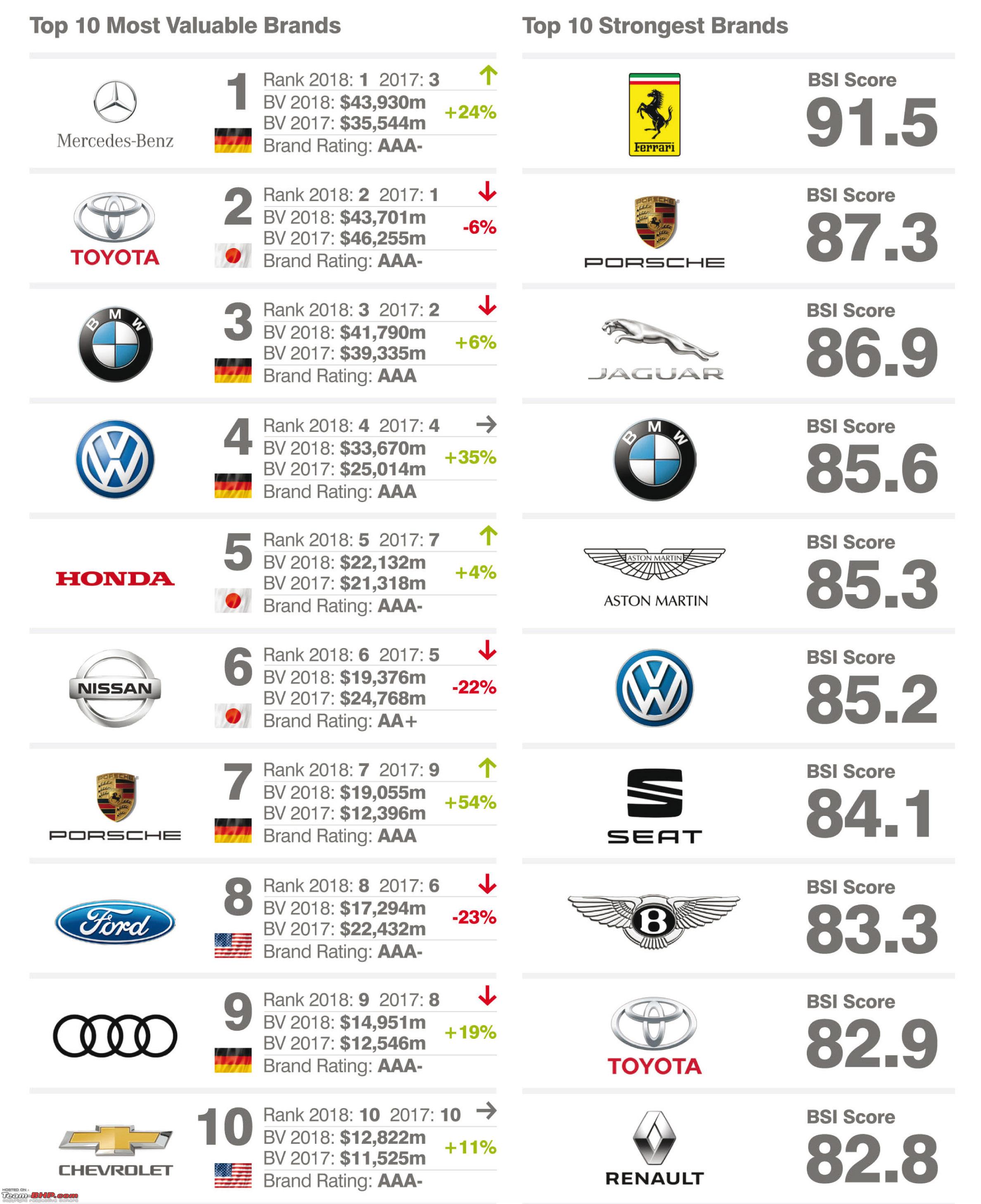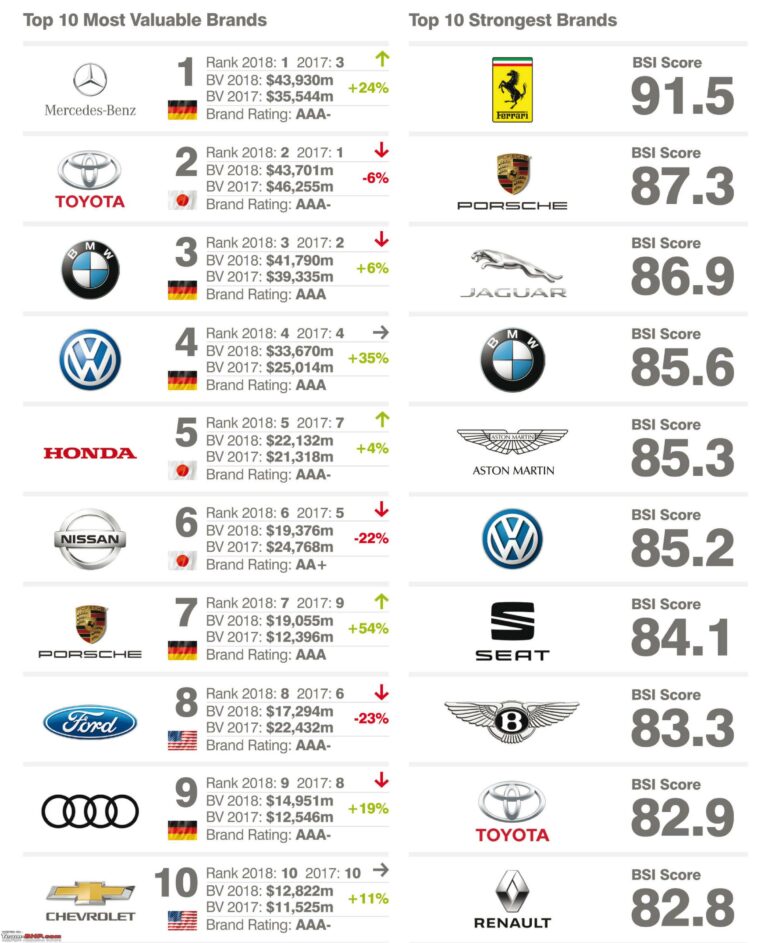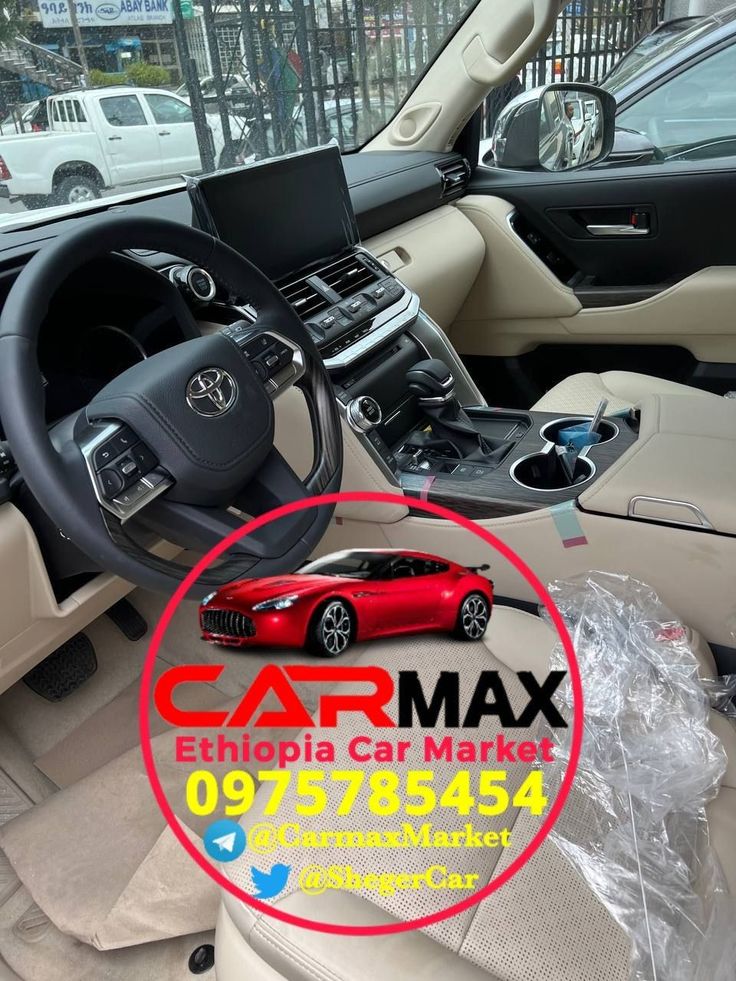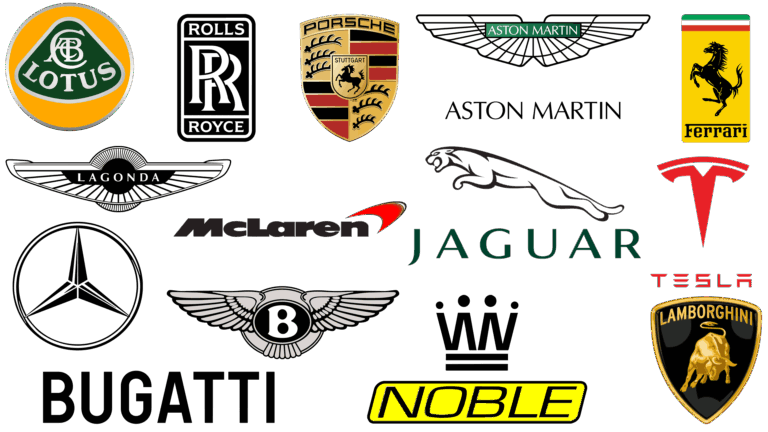Car Brands: Navigating the Automotive Landscape
Car Brands: Navigating the Automotive Landscape cars.truckstrend.com
Introduction
In the vast and ever-evolving world of automotive engineering, "Car Brands" stand as much more than just names or logos; they are the very identity, heritage, and promise behind every vehicle. A car brand encapsulates a company’s philosophy, its design language, its technological prowess, and its commitment to quality, performance, or value. From the roar of a performance engine to the silent hum of an electric motor, each brand tells a unique story, shaping consumer perceptions and driving purchase decisions. Understanding car brands is crucial not just for enthusiasts, but for anyone looking to make an informed choice in a market brimming with options. This comprehensive guide will delve into the multifaceted world of car brands, exploring their categories, the factors influencing their appeal, and the exciting future that lies ahead.
Car Brands: Navigating the Automotive Landscape
The Anatomy of a Car Brand
A car brand is a complex entity built on several pillars, differentiating one manufacturer from another in the competitive global market. It’s not merely about the emblem on the hood; it’s about the entire experience and perception associated with it.
- Brand Identity and Design Language: This includes the logo, specific grille designs, headlight signatures, and interior aesthetics that make a vehicle unmistakably from a certain brand. For instance, BMW’s kidney grille or Mercedes-Benz’s three-pointed star are instantly recognizable. This consistent design philosophy helps establish a strong visual identity.
- Reputation and Heritage: Decades, or even centuries, of manufacturing history contribute to a brand’s reputation. Brands like Porsche or Ferrari leverage their racing heritage, while Toyota and Honda are renowned for reliability. This legacy builds trust and an emotional connection with consumers.
- Core Values and Philosophy: Every brand operates with a set of underlying principles. Volvo is synonymous with safety, Subaru with all-wheel-drive and outdoor adventure, and Tesla with cutting-edge electric technology and innovation. These values guide product development and marketing strategies.
- Technological Prowess: A brand’s commitment to innovation, be it in engine efficiency, infotainment systems, safety features, or autonomous driving capabilities, significantly shapes its identity. Brands that consistently push technological boundaries often lead market trends.
- Market Positioning: Whether a brand aims for mass-market affordability, premium luxury, or niche performance, its positioning dictates its target audience, pricing strategy, and the features it prioritizes.
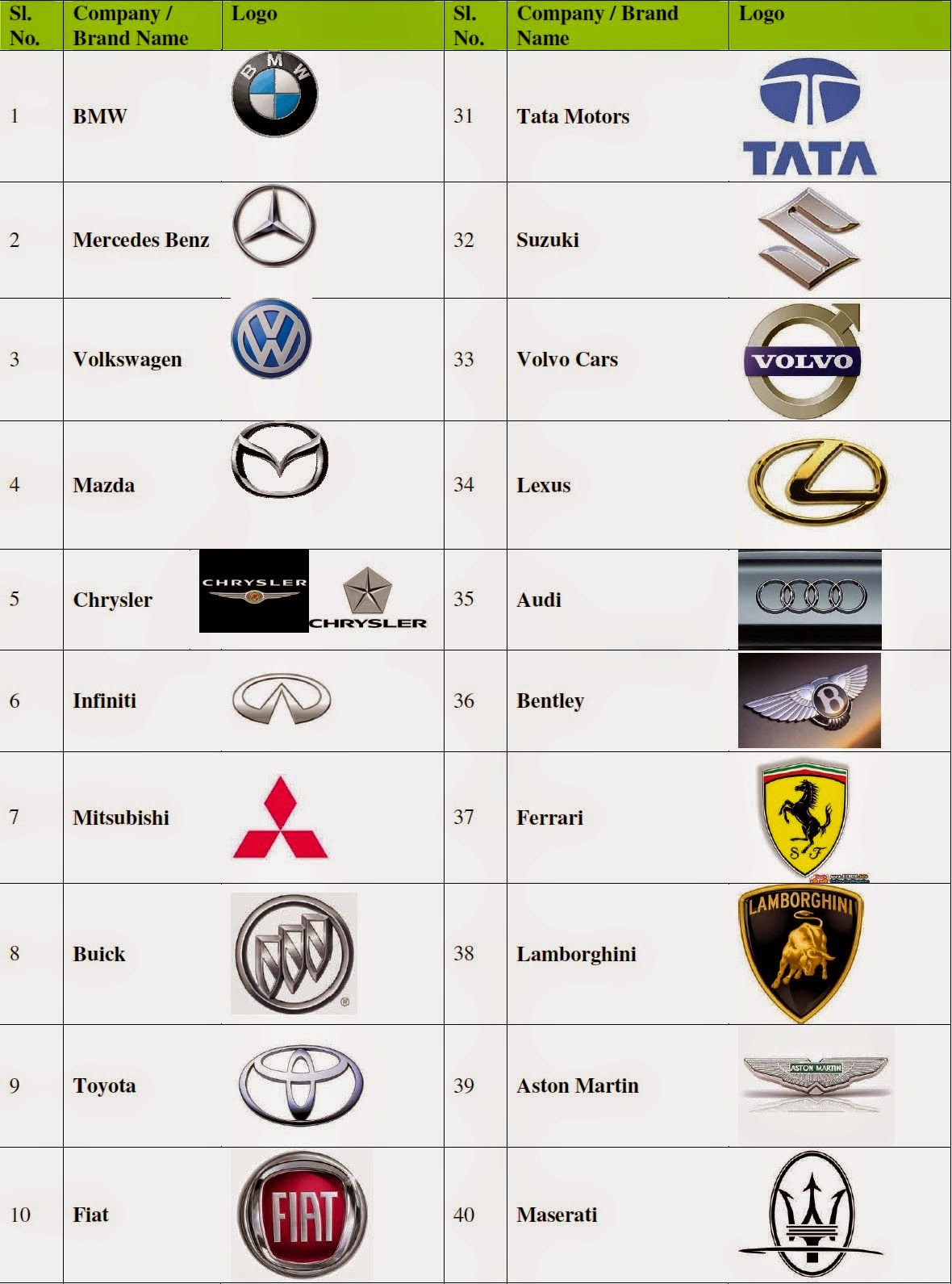
These elements combine to create a distinct brand image that influences everything from marketing campaigns to consumer loyalty.
Major Categories of Car Brands
The automotive landscape can be broadly categorized based on their primary market focus, pricing, and the type of driving experience they offer.
1. Mass Market / Volume Brands

These brands target a broad consumer base with a focus on affordability, practicality, reliability, and fuel efficiency. They often offer a wide range of body styles, from compact sedans to SUVs and trucks.
- Characteristics: High production volumes, extensive dealership networks, lower cost of ownership, diverse model lineups.
- Examples: Toyota, Honda, Ford, Volkswagen, Hyundai, Kia, Chevrolet, Nissan, Mazda.
- Key Focus: Delivering reliable transportation, practical features, and value for money to the average consumer.
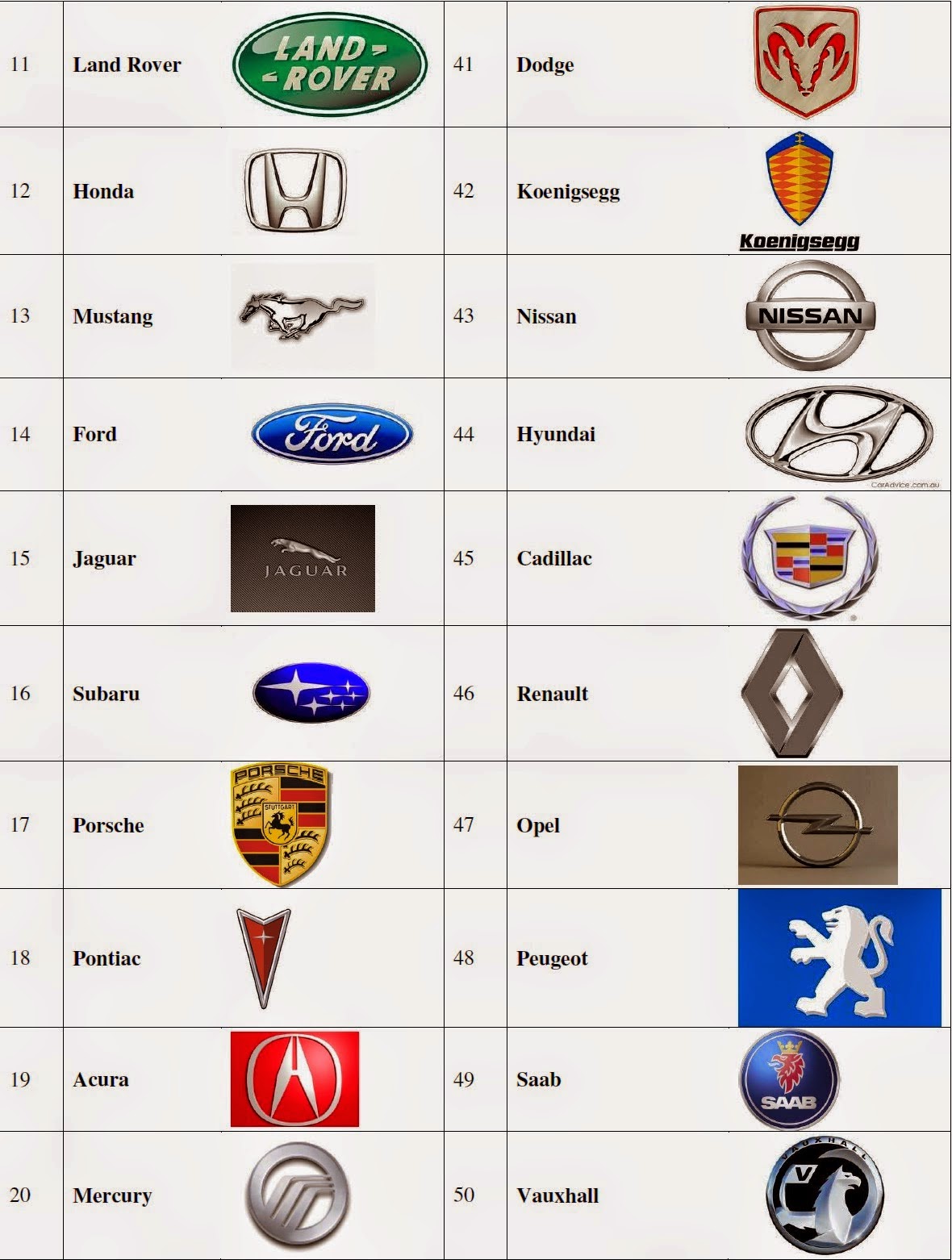
2. Luxury Brands
Luxury brands prioritize comfort, premium materials, advanced technology, superior performance, and prestige. They often come with higher price tags and offer a more exclusive ownership experience.
- Characteristics: High-end finishes, powerful engines, cutting-edge infotainment and safety features, exclusive services, strong brand image.
- Examples: Mercedes-Benz, BMW, Audi, Lexus, Cadillac, Acura, Genesis, Volvo (also strong on safety).
- Key Focus: Providing an elevated driving experience, status, and sophisticated technology.
3. Performance / Sports Car Brands
These brands are dedicated to speed, handling, and exhilarating driving dynamics. They often produce limited numbers of highly specialized vehicles.
- Characteristics: High-horsepower engines, advanced suspension systems, lightweight materials, aerodynamic designs, often two-seater configurations.
- Examples: Ferrari, Lamborghini, McLaren, Porsche (many models), Aston Martin, Lotus.
- Key Focus: Delivering unparalleled driving thrills, track capability, and exclusivity.
4. Electric Vehicle (EV) Specialist Brands
While many traditional brands now offer EVs, a new category of brands has emerged solely focused on electric propulsion. These brands often prioritize sustainability, innovative technology, and a distinct user experience.
- Characteristics: All-electric powertrains, long-range capabilities, advanced battery technology, minimalist interiors, over-the-air updates.
- Examples: Tesla, Rivian, Lucid, Nio, Polestar, VinFast.
- Key Focus: Pioneering sustainable mobility, pushing technological boundaries in electrification, and redefining the car ownership experience.
5. Off-Road / Utility Brands
These brands specialize in vehicles designed for rugged terrain, heavy-duty work, or adventurous lifestyles, emphasizing durability, capability, and versatility.
- Characteristics: High ground clearance, four-wheel drive systems, robust chassis, towing capacity, durable interiors.
- Examples: Jeep, Land Rover, Ram, GMC.
- Key Focus: Providing extreme capability, utility, and resilience for challenging environments or demanding tasks.
Key Factors Influencing Car Brand Perception & Choice
When consumers choose a vehicle, they often implicitly or explicitly weigh several factors that contribute to a brand’s overall appeal.
- Reliability & Durability: A brand’s reputation for building vehicles that last, require minimal repairs, and hold their value is paramount. Brands like Toyota and Honda have built their empires on this foundation.
- Performance & Driving Dynamics: This includes engine power, acceleration, handling precision, braking capability, and overall ride comfort. Some buyers prioritize thrilling performance, while others seek a smooth, quiet ride.
- Design & Aesthetics: The visual appeal of a car, both inside and out, plays a significant role. A brand’s unique design language can evoke emotions and reflect personal style.
- Technology & Innovation: Modern buyers increasingly look for advanced infotainment systems, connectivity features, sophisticated driver-assistance systems, and autonomous driving capabilities.
- Safety Ratings: Independent crash test results and the presence of active and passive safety features are critical considerations for family buyers and safety-conscious individuals.
- Environmental Impact: With growing awareness of climate change, fuel efficiency, lower emissions, and the availability of hybrid or electric options are becoming major differentiators.
- Brand Heritage & Image: The history and cultural association of a brand can create a powerful emotional connection, influencing perceptions of prestige, trustworthiness, or sportiness.
- Cost of Ownership: Beyond the initial purchase price, factors like fuel economy, insurance costs, maintenance schedules, and anticipated resale value contribute to the total cost of owning a particular brand’s vehicle.
- Customer Service & Dealership Experience: The quality of service from dealerships, including sales, maintenance, and warranty support, significantly impacts customer satisfaction and loyalty.
Navigating the Car Brand Landscape: Practical Advice
Choosing the right car brand and model can be daunting, but a structured approach can simplify the process.
- Define Your Needs and Budget: Before looking at any brand, clearly identify what you need from a vehicle. What’s your primary use (commuting, family transport, off-roading, performance driving)? How many passengers? What’s your realistic budget for purchase, insurance, and running costs?
- Research Thoroughly:
- Read Reviews: Consult reputable automotive publications, consumer reports, and owner reviews for insights into reliability, performance, and common issues for specific models and brands.
- Compare Brands: Use online tools to compare features, specifications, safety ratings, and ownership costs across different brands and models that fit your criteria.
- Watch Videos: YouTube channels and automotive shows offer visual tours and driving impressions.
- Consider Total Cost of Ownership (TCO): Don’t just focus on the sticker price. Research fuel economy, insurance rates, typical maintenance costs, and predicted depreciation for the brands you’re considering. A cheaper initial purchase might be more expensive to own long-term.
- Prioritize Your Non-Negotiables: Is safety paramount? Do you need cutting-edge technology? Is resale value critical? Identify your absolute must-haves and filter brands accordingly.
- Test Drive, Test Drive, Test Drive: This is crucial. Drive vehicles from different brands and segments that interest you. Pay attention to comfort, visibility, handling, acceleration, and the user-friendliness of controls. A brand might look good on paper but not feel right behind the wheel.
- Evaluate Dealership Experience: The relationship with your local dealership can be as important as the car itself. Visit dealerships, assess their customer service, and inquire about their service department.
- Think About Future Trends: If you plan to keep the car for a long time, consider how brands are adapting to electrification, autonomous technology, and connectivity. Investing in a brand that is forward-thinking might be beneficial.
Challenges and Future of Car Brands
The automotive industry is undergoing a profound transformation, presenting both immense challenges and opportunities for car brands.
- Electrification Transition: Traditional brands face the monumental task of retooling factories, developing new EV platforms, and convincing consumers to switch from internal combustion engines. New EV brands, meanwhile, must scale production and build trust. This shift will redefine performance, range, and charging infrastructure as core brand attributes.
- Autonomous Driving: As vehicles become more autonomous, the focus might shift from the "driving experience" to the "mobility experience." Brands will need to redefine their value proposition, potentially focusing on comfort, connectivity, and productivity within the vehicle.
- Connectivity & Data: Cars are becoming rolling computers. Brands are grappling with how to monetize data, offer subscription services for features, and ensure cybersecurity, all while maintaining user trust.
- Changing Ownership Models: The rise of ride-sharing, car-sharing, and potential subscription models challenges the traditional concept of car ownership. Brands might transition from selling cars to selling mobility solutions.
- Supply Chain Disruptions: Global events have highlighted the fragility of automotive supply chains, particularly for semiconductors. Brands must build more resilient and diversified supply networks.
- Brand Reinvention: Established brands must constantly innovate and adapt to stay relevant. This involves not just new models but also rethinking their brand identity to appeal to new generations and changing consumer values. New brands, free from legacy burdens, can often innovate faster.
The future of car brands will be defined by their ability to embrace these disruptions, reinvent their products and services, and continue to forge strong emotional connections with consumers in an increasingly digital and sustainable world.
Illustrative Price Ranges by Car Brand Category (Approximate Starting MSRP – USD)
Please note: Prices are highly variable based on model, trim, options, and market conditions. These are general approximations for entry-level models within each category.
| Brand Category | Example Brands | Typical Starting Price Range (USD) |
|---|---|---|
| Mass Market / Volume | Honda, Toyota, Hyundai, Ford, Nissan | $20,000 – $35,000 |
| Luxury | BMW, Mercedes-Benz, Audi, Lexus, Genesis | $40,000 – $65,000+ |
| Performance / Sports Car | Porsche (718 Cayman), Chevrolet (Corvette) | $65,000 – $100,000+ |
| EV Specialist | Tesla (Model 3), Polestar (Polestar 2) | $40,000 – $60,000+ |
| Off-Road / Utility | Jeep (Wrangler), Subaru (Forester) | $30,000 – $45,000+ |
Frequently Asked Questions (FAQ)
Q1: What’s the difference between a car brand and a car model?
A: A car brand (e.g., Toyota, BMW, Ford) is the manufacturer or company that produces vehicles, encompassing its entire lineup, heritage, and values. A car model (e.g., Toyota Camry, BMW 3 Series, Ford F-150) is a specific vehicle type or nameplate produced by that brand. A brand can have many different models.
Q2: How do car brands develop their reputation?
A: Reputation is built over time through consistent product quality, reliability, customer service, performance, safety records, and effective marketing. Positive word-of-mouth, critical reviews, and long-term ownership experiences all contribute to a brand’s standing in the market.
Q3: Are older car brands always more reliable than newer ones?
A: Not necessarily. While established brands often have a long history of reliability (e.g., Toyota, Honda), newer brands or those with a renewed focus on quality can quickly build a strong reputation. Conversely, some older brands might face challenges adapting to new technologies or quality standards. It’s best to check specific model reliability ratings.
Q4: What’s the future of luxury car brands in an EV era?
A: Luxury brands are rapidly transitioning to EVs, focusing on maintaining their core attributes of performance, comfort, and advanced technology within an electric framework. They will emphasize rapid charging, extended range, silent power, and unique EV-specific luxury features like advanced connectivity and bespoke interiors. Prestige will remain key.
Q5: How do I choose the right car brand for me?
A: Start by defining your needs (budget, usage, size, features). Then, research brands known for excelling in those areas (e.g., reliability, performance, luxury, safety). Read reviews, compare models, and most importantly, test drive vehicles from different brands to see which one best fits your personal preferences and driving style.
Concluding Summary
Car brands are more than just labels; they are powerful identifiers that encapsulate a company’s past, present, and future vision. They guide consumer choice, foster loyalty, and represent a complex interplay of design, engineering, marketing, and reputation. From the practicalities of a mass-market sedan to the aspirational allure of a luxury performance car, each brand offers a distinct promise. As the automotive industry stands on the precipice of transformative change, driven by electrification, autonomy, and connectivity, car brands will continue to evolve, redefine themselves, and innovate. Understanding these brands is key to navigating the exciting automotive landscape and making informed decisions in an era of unprecedented choice and technological advancement.
